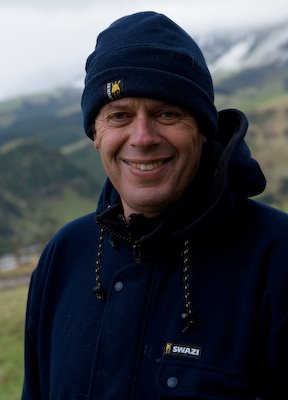The Art of Seeing part III-Closing the gap

Warning: another heavy-duty Post!!
Kia ora tatou:
Enough of the gear-involved posts. It is time to get serious again. I had the recent joy of spending some time with a student and going out photographing with him. At some point he asked me a question about what he should be looking for. A fair and valid question, since that uncertainty usually clouds our approach to making an image. If we don’t know what we are looking for, then the result will be confused at worst, derivative at best. I would like to take the opportunity to talk about this. For a time I would have said: “it’s all about design”.
Well it is and it isn’t.
And like all worthwhile journeys, the path to better photography(whatever that may mean) one comes with big, deep potholes which we can fall into. They are very hard to climb out of. So I would like to suggest some guidelines.
The first thing to realise about photography is the disparity between how our camera sees and how we see. Let’s recap: you see with your mind, not your eyes, which only feed raw data to the brain. We see what we want to see, or what we have learned to see.
Potholes. Habits. Visual laziness.
We focus on what is of interest to us, and our brain discards or reduces the significance, both visually and therefore psychologically, of what we are looking at. If we see our true love for the first time across a crowded room (barf), then our chemically altered perceptions immediately block out all the other people in the room. Our psychological zoom lens kicks in. We have edited the scene. We do this all the time.
Another example. Last week I was crossing on the back road from National Park to Turangi after a lovely dinner in Kakahi. It was around midnight, and a full moon. The southerly storms that had blown through had lowered the snow down to the bushline. In the moonlight Ruapehu, Tongariro and Ngaurahoe glowed with a ghostly purple-white intensity. The ski lodges with their low-Kelvin lighting marched up the sides of the mountain and made it seem as if I was staring at castles from some fairy-tale. It was ethereal and otherworldly.
My photographer’s acquisitive instinct told me to stop and make a photograph. So I pulled up and got out. Then I began to analyse the scene, the proportions of the subject matter in the scene, the potential design problems, which lens to use, exposure issues and whether it would work.
A.C.E. Analysis; Composition; Exposure.
Then I realised the foreground was wrong, that all I had was a thin band of subject matter, and that it couldn’t work. I was too far away. If I went closer, the left-to-right spread would be too far. It just wasn’t going to happen. The issue here was my mind, which was in Maximum Selective Edit mode. Only when I took the time to work through the issues did it become clear that the disparity between my brain and what my equipment had to offer was uncrossable.
Somebody once said that the trick is not knowing when to make the photograph; it is knowing when not to make the photograph. This was one of those times. So I made a photograph in my mind and drove on. I still have that image and I have replayed it almost daily.
You see, it seems to me that to make better photographs, you need to understand your camera fully. No, I am not talking about knowing which knobs, dials and buttons to push. I mean closing the gap between what the camera sees and what you do.
The fundamental thing to understand is that your camera sees impartially. It records all that is framed and accords it importance according to the proportion of the frame that it occupies. Thus, if that lone tree in the distance occupies 1.5% of the framed area, then it will occupy 1.5% of the finished picture space. That gives it minimal visual significance unless it has something to give it greater visual (sic: psychological) weight. A flock of psychotic vultures or a werewolf next to it could do that, especially if it is the only tree on a largely empty picture space. Then it assumes greater visual weight. This is why so many images that we thought would be fantastic often turn out to be disappointing. We haven’t yet learned to close the gap.
So how do we do this?
A.C.E. Analysis. Composition. Exposure.
Analyse your scene. Start by looking at it without the camera. Roam around it (visually), noting things of importance to you. Ask yourself what you want to keep, what you could live without. Is the space expansive or confined? Do you want the whole scene or just a part? If the latter, then you may be looking at a longer focal length to extract that portion of the scene. Do you want to accentuate space? Perhaps a wider angle would work here.
Now get out your camera, put on the lens you thought about and work the scene through the viewfinder. Preferably use a tripod. It slows you down and makes you think. When you decide you have it framed, step away and look at the scene.
Now come back to the viewfinder and run your eye around the frame, noting the relative size of the objects in it and whether the object that caught you attention has any visual competition. If so, you may need to reframe to make a clearer statement. If you have a grid screen facility, turn it on. This can be a big help for scene analysis. It forces you to see what is really there; a series of shapes, lines, patterns, shadows and other design elements on a piece of glass.
If you are digital, then shoot a frame and analyse it on the LCD. Does it look the same as what you are seeing through the viewfinder? Surprisingly it may appear quite different. The proportions may look other than what you are seeing in the viewfinder.
Closing the gap.
Change lens, change position, change whatever. But keep working at it, chimping as you go.
Great images all have to be worked for. And they demand your respect.
Shoot and change. Shoot and change.
If you keep working on that one idea, shooting a lot and moving in closer, you will begin to drill down to what really attracted you in the first place.
Take time and make lots of photographs.
And close the gap.
Ka kite ano


1 Comments:
Hey Tony
I reckon I've read this article 16 times now. each time it reads differently and each time it makes me think about photography differently.
Following this Blog I'm starting to appreciate why you teach photography. You have a gift of making us mortals think outside our comfort zones. I have honestly paid good hard earned money to learn less than what you make me think about when I read your articles here.
Back to this post, I want to be on the development team that designs the technology where you can make a photograph from what you see in your mind. I tell you, the time I have spent pursuing photographs that I have seen in my dreams and subconsciousness is unbelievable. I'd guess about 1% of what you imagine is possible to capture with a camera. Roll on the time you can push the screen capture button for your mind. Then again, the possibilities are scary. Lets put that on hold for a couple of generations yet.
Cheers
Andrew
Post a Comment
<< Home